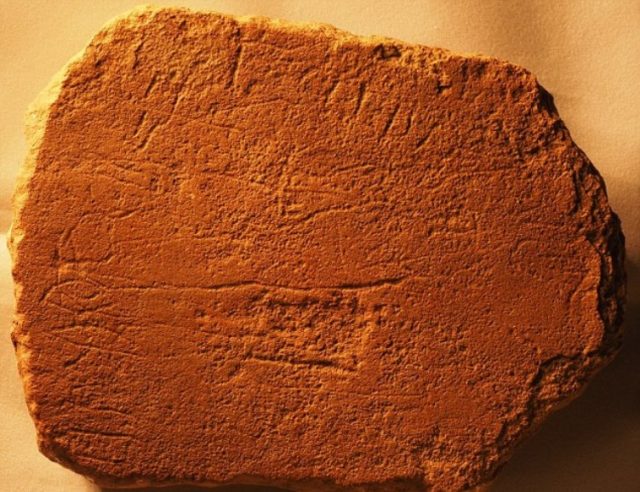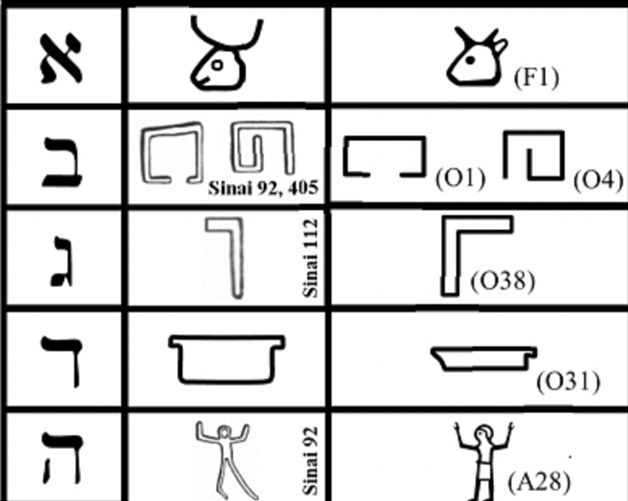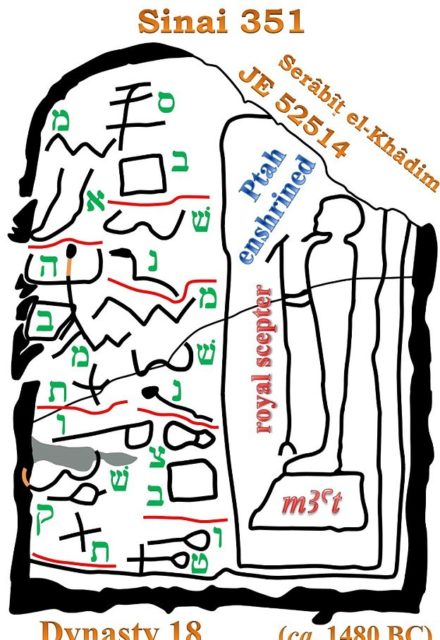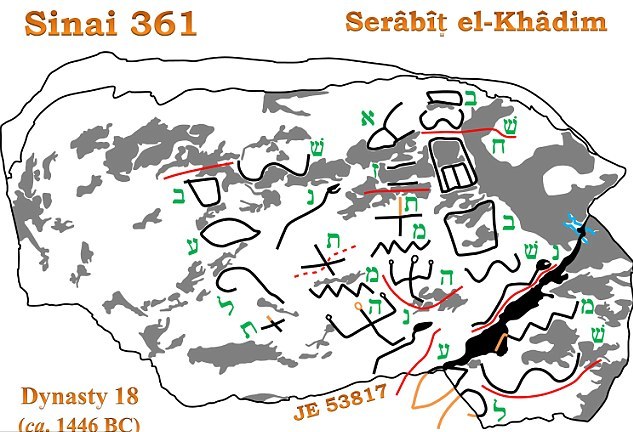Hebrew, the ancient language of the Israelites, may have its written origins in Egyptian hieroglyphs, according to a controversial new theory.
Dr. Douglas Petrovich, a researcher at Wilfrid Laurier University in Ontario, Canada, believes that the hieroglyphs inscribed upon a series of tablets widely considered to display the world’s first alphabet, and currently housed at the Egyptian Museum in Cairo, may, in fact, be the earliest evidence of a written proto-Hebrew. However, this theory would place the Israelites in Egypt 3,800 years ago, the age of the Sinai tablets; while this timeline is consistent with the dates in the Old Testament, many scholars remain skeptical.

Dr. Petrovich first discovered a tablet called Sinai 115 four years ago and claims that he was able to translate the word “Hebrew”, and several names of figures from the Bible. “I followed an archaeological trail that led me to identify several specific biblical figures in the epigraphical record,” he said, using his own interpretation of the letters to create the “Hebrew 1.0” script.

Dr. Petrovich pieced together the alphabet by comparing the hieroglyphs on the tablets, corroborated by Egyptian hieroglyphs, with the ancient Hebrew alphabet. He found that the symbols bore a striking resemblance to the form of ancient Hebrew letters.
After identifying the individual Hebrew letters and treating them as written text, he then translated the inscriptions on several different tablets and devised a complete alphabet. Dr. Petrovich claims to have read several distinctive Hebrew words, including the word “Hebrews” and the names of three biblical figures ‘Ahisamach’, ‘Moses’, and ‘Asenath’, inscribed on the tablets Sinai 375a and 361. This would be further evidence for the presence of the Israelites in Egypt and the link between the hieroglyphs and ancient Hebrew.

To whom can we attribute the creation of this supposed original alphabet? Dr. Petrovich believes the source was perhaps Joseph’s sons Ephraim and Manasseh, who were both born and raised in Egypt and were thus taught hieroglyphic Egyptian writing; they may presumably have transformed it into ancient Hebrew. Exodus 12:40-41 states that the Israelites lived in Egypt for 430 years, from 1876 to 1446 BC, consistent with the age of the tablets. Furthermore, Dr. William Manley from the University of Glasgow writes “I believe most people accept that, during the 1st millennium BC, Egyptian hieroglyphic signs were adapted to create an alphabet for writing the Meroitic language of East Africa, so the possibility of making such adaptation is not in doubt”.
However, the ancient Hebrew alphabet was acrophonic, meaning that letters were assigned names that began with the letters themselves. These contained no vowels, making translation extremely difficult so that scholars have cast doubt on whether or not Dr. Petrovich’s translations of the names of biblical figures, the strongest evidence for his argument, are accurate, Mail Online reported.

“Let’s say, for the sake of example, that English has no written script,” Dr. Petrovich explained. “And like the ancient Hebrews, you and I are going to invent it … and without vowels. So, we decide that the “boat” pictograph is going to give us the “b” sound. Every time we want someone to read “b” we draw a boat. We then decide that a “door” will give us the “d” sound, since “d” is what comes first in that word. When we draw a boat and a door side by side, our reader reads, “bed” or “bad”, or “bid”, or “bud”.”
This, obviously, makes the act of translating extremely difficult, and scholars like Professor Thomas Schneider from the University of British Columbia have already found fault with Dr. Petrovich’s findings. He writes, “as part of Douglas Petrovich’s proposal that the Early Alphabetic Inscriptions are Hebrew, he has proposed to read a word in one of the Egyptian inscriptions from Serabit el-Khadem as the word for ‘Hebrew’. This, however, is just not correct.”

However, Dr. Petrovich is not the first scholar to theorize the primacy of the ancient Hebrew alphabet. In the 1920s, a German archaeologist by the name of Hubert Grimme arrived at similar conclusions, but was met with disbelief and ridicule. “Unfortunately for him,” says Dr. Petrovich, “not enough was known about the proto-consonantal alphabet for him to be certain of his identification of all of the letters in the alphabet, and he was inaccurate on some of his identifications. With Grimme’s occasional wrong choice of letter and his misdrawing of pictographs, he often made wild identifications of words and meanings of complete inscriptions”.
“They will attempt to do the same to me, rest assured of that”, Dr. Petrovich laments, but the researcher remains firm in his convictions. “but I have no doubt in my mind whatsoever that Hebrew is the world’s oldest alphabet.”
